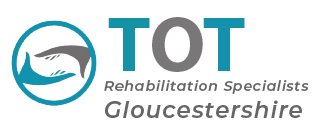Rehabilitation Options for Elderly Stroke Patients
Stroke rehabilitation comprises a range of different therapies which help stroke survivors regain quality of life and return to pre-stroke levels of activity, mobility, speech, and cognitive function.
Over 100,000 people in the UK have a stroke each year, with strokes affecting people of all ages. The type of rehabilitation programme that a stroke survivor will require will be determined by the part of the brain that was damaged by the stroke, in addition to the severity and level of impact. However, all recovering stroke patient can expect to participate in the two main rehabilitation therapies used for stroke patients: physiotherapy and occupational therapy.
What rehabilitation therapies should an elderly stroke patient expect?
Rehabilitation for elderly stroke sufferers typically comprises neurological therapies such as the movement, physio, and occupational therapy treatments provided by our team at Therapies on Thames.
Our priority at all times is to provide compassionate care which helps older people resume as many of their normal activities, mobility, cognitive functionality, communication, and motor skills as possible after a stroke, so that they can live independently and feel strong and confident in everyday tasks. Our objective is for our patients to be able to enjoy optimal quality of life for as long as possible, so that they can interact and engage with their families, grandchildren, and friends without being hampered by physical difficulties.
As part of the care we provide, elderly stroke patients can expect to participate in a variety of physio and occupational therapies, including:
Speech Therapy
If the stroke happens in an area of the brain that controls speech or communication, this can cause aphasia. Aphasia is defined as a language and/or speech impairment, and can affect speech, writing, reading, and general communication. Speech therapy can help the elderly patient regain normal speech patterns, and may include breathing exercises, tongue strength exercises, practicing speech sounds, sentence practice, and naming pictures.
Mobility Training
A stroke can affect mobility through causing weakness or paralysis, planning or co-ordination issues, problems with balance or sensation, swelling, fatigue, or pain. Mobility exercises are likely to include repetition of specific movements, and potentially also electrical stimulation to strengthen weakened muscles.
Cognitive Therapy
Cognitive exercises can help sharpen memory and mental clarity but need to be practiced consistently. Consistency is key for neuroplasticity, which is how the brain heals after a stroke. Although memory may be impaired due to the damage from stroke, neuroplasticity allows the brain to form new neural networks and rewire itself to heal from the damage. Cognitive therapy may include card matching, visual/spatial processing games, alphabetising sentences, counting money, brain teasers, memory and board games, and cognitive therapy apps.
Physical Therapy
For most strike patients, rehabilitation mainly involves physical therapy. The aim of physical therapy is to have the stroke patient relearn simple motor activities such as walking, sitting, standing, lying down, and the process of switching from one type of movement to another.
Occupational Therapy
This is particularly useful in helping elderly stroke patients relearn daily activities. Its goal is to help the person relearn everyday activities such as eating, drinking, and swallowing, dressing, bathing, cooking, reading and writing, and using the toilet. Occupational therapists seek to help the patient become independent or semi-independent.
How can stroke rehabilitation help an elderly person recover?
Stroke rehabilitation will help rebuild an elderly person’s strength and mobility, and enable them to re-learn activities such as talking, grasping, and walking.
Our tailor-made stroke rehabilitation plans for elderly patients will help each patient with their individual needs and requirements. The overall goal of stroke rehabilitation is to improve each patient’s quality of life.
How long does stroke rehabilitation last?
The length of time that an elderly person can expect to participate in stroke rehabilitation depends entirely on the severity of the stroke and physical and cognitive consequences. While some stroke survivors can recover quickly, many will require long-term rehabilitation that could last for months or possibly years after their stroke.
Will stroke rehabilitation be too demanding for an elderly person?
We understand that stroke rehabilitation can seem like a very exhausting and daunting task for elderly people to undertake, which is why it’s important to use a therapist that specialises in the care and rehabilitation of elderly stroke survivors – like our team at Therapies on Thames.
Our patients always come first. We will support and encourage our patients every step of the way and won’t ever push them to do anything that causes too much discomfort or pain. Our objective at all times is to improve each elderly patient’s quality of life, both emotionally and physically.
About Therapies on Thames
Founded in 2012, Therapies on Thames offers specialist stroke rehabilitation services for the elderly across the UK. With a head office located in Berkshire, our team provides inpatient and home visit services for those who need physiotherapy or occupational therapy to help recover from an injury or ongoing health issue.
All therapists at Therapies on Thames are registered professionals with the Health & Care Professions Council and are Disclosure and Barring Service (DBS) checked.
If you or a loved one needs assistance in regaining or maintaining their independence at home after a stroke, contact us today by completing our contact form.
